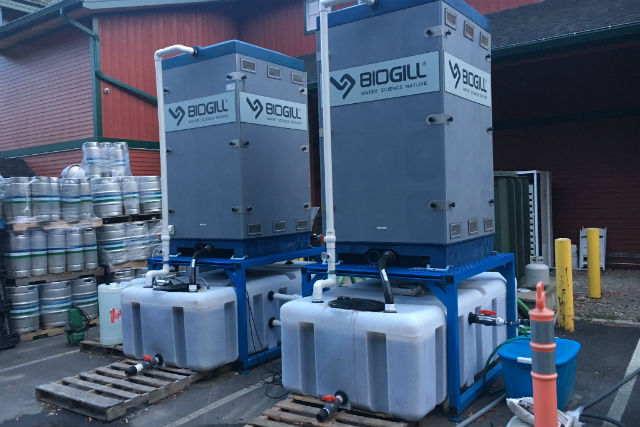
Securing space in the off-premise world has never been simple, but competing for a draft line can feel like an entirely different game for cideries. Producers across the country say the dynamics of each channel require distinct strategies, yet visibility only matters if it keeps turning into velocity.
For many cideries across the US, the off-premise battle starts with simply getting noticed. Aaron Sarnoff-Wood, co-founder and vice president of sales at 2 Towns Ciderhouse, said that winning shelf space is only the beginning.
“Securing new distribution is only half the battle, we have to ensure that the velocity of sales justifies the placement or we will soon find our brand replaced,” he said.
With grocery sets offering limited space and only a few open slots for new offerings, 2 Towns focuses heavily on “programming opportunities that draw visibility and sales which keeps our brands relevant.”
That same challenge intensifies in on-premise environments. Many accounts still default to one cider handle, if they pour cider at all, even as taplists overflow with IPAs and similar beer styles. Sarnoff-Wood said that misconception costs retailers money.
“In internal research, we’ve found that the second cider handle will almost always outperform a beer handle which has multiple similar styles already pouring,” he said.
Even when bars want to expand their cider presence, those taps are hard-won. Patrick Kwiatkowski, co-founder of Houston’s City Orchard, said the biggest barrier isn’t consumer demand, it’s the decision-making process.
“It just takes more time and relationships are more important and many times more fleeting,” he said, noting that corporate-driven purchasing decisions can disconnect product choice from what customers actually want.
Tristan Wright, founder and president of Lost Boy Cider, sees a similar pattern. In beer-first settings, he said, “cider can be an afterthought,” especially as taps turn over quickly. Lost Boy has leaned heavily on education to change that.
“We’ve found success by educating staff at bars and restaurants, so they feel confident pouring our products,” Wright said.
In markets where beer dominates, the challenge intensifies. Charles Talbott of Talbott’s Cider said that in Colorado, “competition is especially fierce due to the strong presence of both regional and national beer brands.”
The cidery’s draft business dropped from 60% to 10% after the pandemic, but Talbott still sees long-term value in nurturing on-premise relationships. Custom tap handles, tin tackers, and other branded tools have been key.
“These tools help bartenders tell our story and encourage trial,” he said, especially when pushing limited or seasonal offerings.
That emphasis on visibility shows up off-premise as well. Cideries say that shelf talkers, cold-box clings, and permanent signage can create crucial moments of discovery, but only when they’re deployed strategically.
At 2 Towns, Sarnoff-Wood said that much of their off-premise success comes from off-planner displays. These depend on eye-catching elements like stackers or additional signage to break through the visual clutter.
In the on-premise, he said permanent POS like LEDs can encourage accounts to stick with a brand. But he cautioned against assuming that more is better.
“Permanent POS can be expensive and suppliers have to be careful not to overspend the account’s potential.”
Wright said Lost Boy’s POS investments have shown measurable returns, especially for seasonals and new releases. Shelf talkers and cold-box clings “definitely moved the needle,” he said, with the cidery tracking velocity by SKU and depletion rates to measure the impact.
Consumer-facing clarity mattered too. After retailer feedback, Lost Boy redesigned packaging for its Wingman brand, switching from a six-pack to a 4-pack and highlighting its “no sugar added” message. The result, Wright said, was stronger reorders.
For City Orchard, the challenge isn’t creating good POS, it’s getting it placed.
“Great POS helps to sell,” Kwiatkowski said. But execution depends on the people closest to the floor.
“Working closely with your distributor reps and the store stewards is key,” he said, emphasizing that relationships determine whether the materials end up where shoppers actually see them.
Visibility only matters when it’s backed by education, relationships, and consistency. A single tap handle or shelf slot may not represent much on its own, but the ability to keep it (and grow from it) comes down to showing value to both retailers and customers at every turn.







Be the first to comment